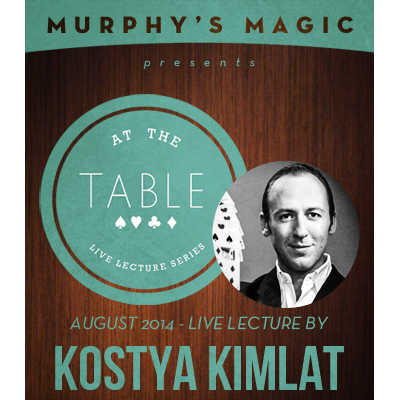Floating an object in midair is perhaps
one of the most stunning things a magician can perform. While I’ve
seen some great close-up illusions in this regard, Defiance
offers some amazing effects. It’s not for table hoppers –
unless you’re willing to put up with a lot of inconvenience and
pre-setup – but Mariano Goni has created an excellent
system and some clever, visual floating illusions.
Spin and Float
With the aptly named The Incredible Spinning
Card, you throw a borrowed credit card several feet away and it
hovers –still spinning - in midair a few feet in front of you.
And this is without you being any
where near it. On your command, the card returns to you.
If you like, there’s a version with a hoop that you can pass
over the spinning card.
 The setup is involved and the kit comes with a
quality device (it’s "reel" nice) and some material to make the
illusions happen. I like the open nature of the device that makes it easy to change out material when it inevitably
breaks. Also, it’s easy to adjust the tension to your liking.
The setup is involved and the kit comes with a
quality device (it’s "reel" nice) and some material to make the
illusions happen. I like the open nature of the device that makes it easy to change out material when it inevitably
breaks. Also, it’s easy to adjust the tension to your liking.
The main setup has to be done ahead of time. Goni teaches you
how to setup on the fly in front of spectators, but even in this
case, you’ll need to scope out the room and pre-plan the
enterprise.
Got Change?
There’s a stunning in-air change. You crumple
a piece of paper into a ball and it begins to levitate. You pull
out a lighter and set the paper on fire, and it turns into a floating
(crumpled) dollar bill. And yes, you can perform the classic
“floating bill” as well. The bill floats from hand to hand and
Goni teaches a way to borrow a bracelet and pass it over the
bill. It’s brilliant handling.
Unrelated to the device that’s provided
with the kit, there’s a floating cigarette effect that is quite
impressive. You cause a cigarette to float in mid air and can
borrow a finger ring and use it as a hoop to pass over it. This one requires
additional materials that you’ll need to purchase from a craft
store. It looks great and magicians will love this one.
The System
Defiance offers a
fantastic system for floating objects. It’s not practical for
strolling or walk around, but if you have situations such as a
formal close-up or intimate stand-up shows, or any where you can
check out a room and setup ahead of time, and are willing to put
in the work, you’ll probably enjoy Defiance. And even if you
don’t use the system, you’ll appreciate the tremendous secrets
and brilliant adaptions found within.
















 And
at the end, the "different" card vanishes and appears in another
location. It's a strong three-phased routine with the first two in the
hands and the third on table.
And
at the end, the "different" card vanishes and appears in another
location. It's a strong three-phased routine with the first two in the
hands and the third on table.